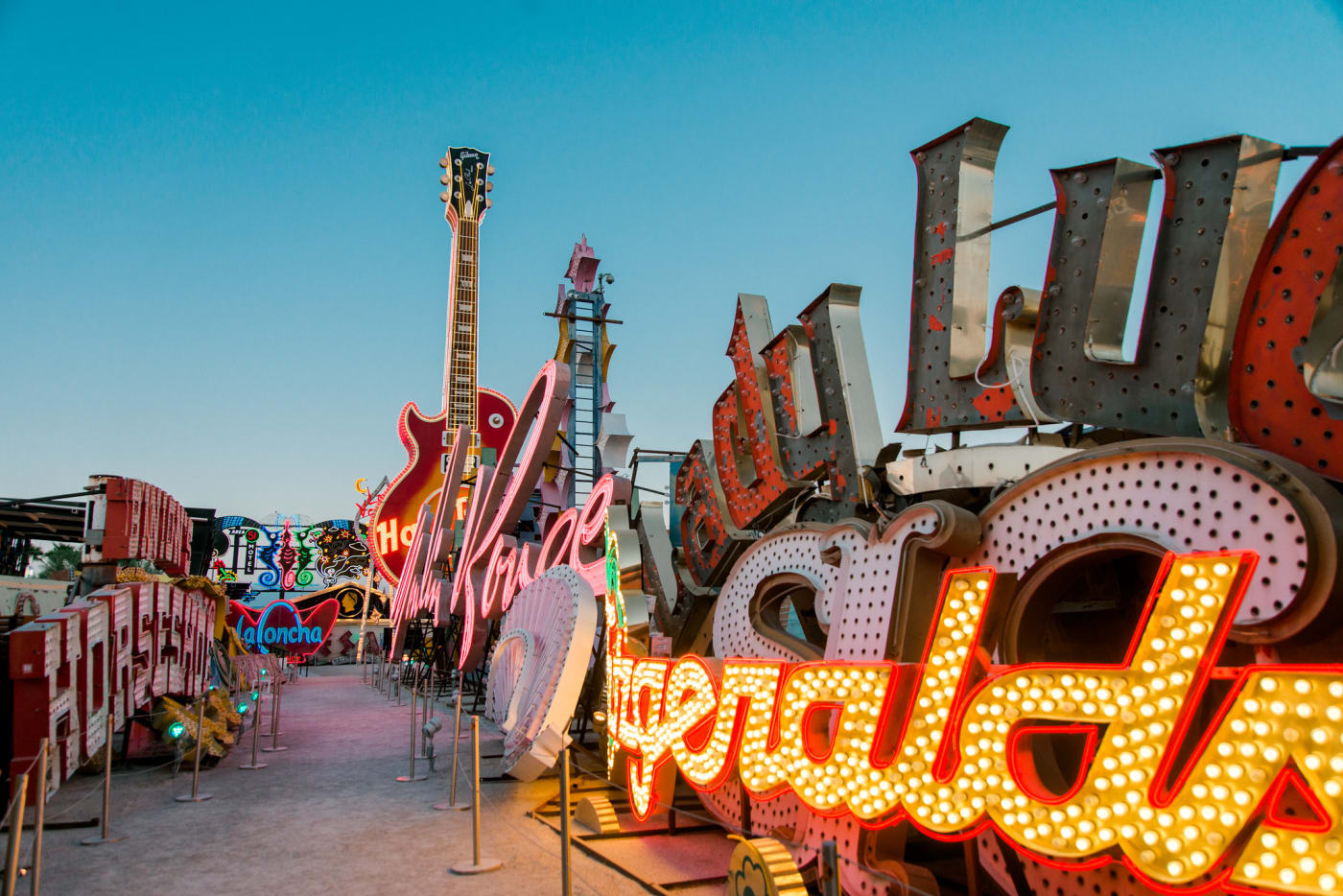
Sarah Hulme Collection, The Neon Museum. 0010.0005
In the spring of 1940, nearly three acres of land owned by the Colorado River Exploration Company, Ltd. were sold to a pair of developers from California, John C. Grayson and Marion B. Hicks. This plot, facing Fremont Street between Sixth and Seventh streets, was developed as the land for the duo’s El Cortez Hotel & Casino, which Grayson & Hicks, along with entrepreneur J. Kell Houssels, opened on November 7, 1941. Representing an investment of $325,000, the El Cortez’s early years saw numerous changes in ownership, careful renovations, and expansions. Even in its first year of operation there was an additional $100,000 upgrade to the facilities, adding 48 new rooms as well as a large private dining room and swimming pool.
Marking the first-ever instance of gaming and liquor licenses being revoked in Las Vegas history, the El Cortez was declared “off limits” for military personnel due to an alleged prostitution ring operating out of the establishment, overseen by one of the El Cortez’s own clerks. Fortunately, this was promptly addressed, and the permits were restored in less than a week, however, it took a little longer before the military were allowed to return to the property.
In 1945, the property was sold for a reported $800,000 to organized crime figures including Edward Berman, Gus Greenbaum, and Moe Sedway. Although less than a year later, J. Kell Houssels reacquired the property he helped establish, alongside a new partner, Ray Salmon. Architect Wayne McAllister went on to remodel the property’s interior, refurbishing the casino, dining room and bar, and adding a barbershop, Western Airlines downtown office, swimming pool, and a large nightclub.
Two years after applying for a permit to have the Young Electric Sign Company (YESCO) design their new neon sign in 1950, the iconic El Cortez Hotel sign above the corner of the property was installed. This was followed by another remodel and extension with a new theme dubbed “Spanish Piratical” involving a Buccaneer Bar, a Pirate’s Den (formerly the Supper Club), and updates to the cocktail waitresses’ costumes.
Jackie Gaughan acquired the El Cortez in 1963, later developing the 15-story tower, which added 200 guest rooms to the property. The top floor became his home for the remainder of his life and marriage to his wife, Bertie. From 1963 to 2008, Gaughan was a highly visible presence at the property, both as its owner and occasionally on the gaming floor. Under Gaughan’s ownership, the property saw extensive expansions during the 1970s and 1980s. Even after Gaughan sold the El Cortez to current owner Kenny Epstein in 2008, Gaughan lived at the property and was integral to ushering in the current era of the El Cortez, one defined by old school charm and style.
In 2013, the El Cortez was included on the National Register of Historic Places (NRHP) in recognition of its architecture and impact, becoming the only active casino in the country to hold this distinction. Over the years the property attracted influential figures in the world of architecture and design, including architects Raymond Abos and Wayne McAllister, the design firm of Zick & Sharp (who went on to design the Moulin Rouge Hotel and the Mint Hotel), and interior designer Tom Douglas, all of whom helped define the property’s Spanish Colonial Revival style which is still evident today.
